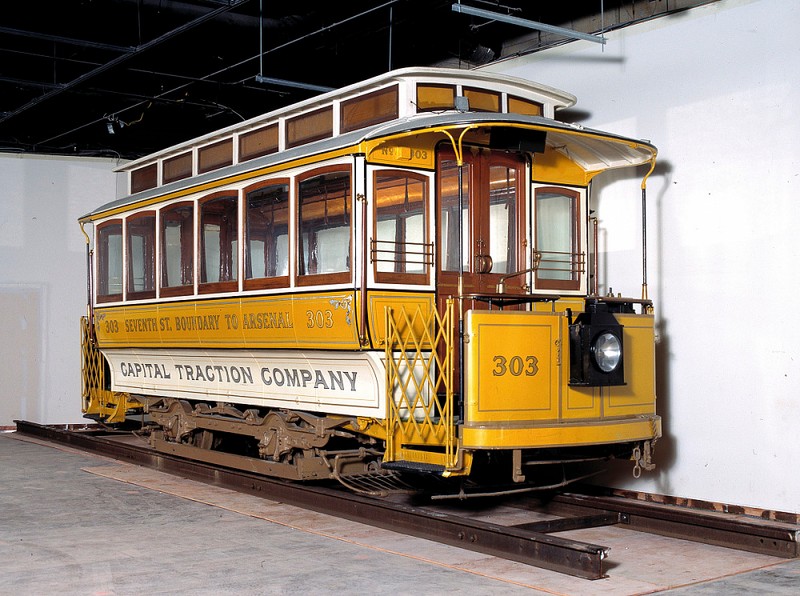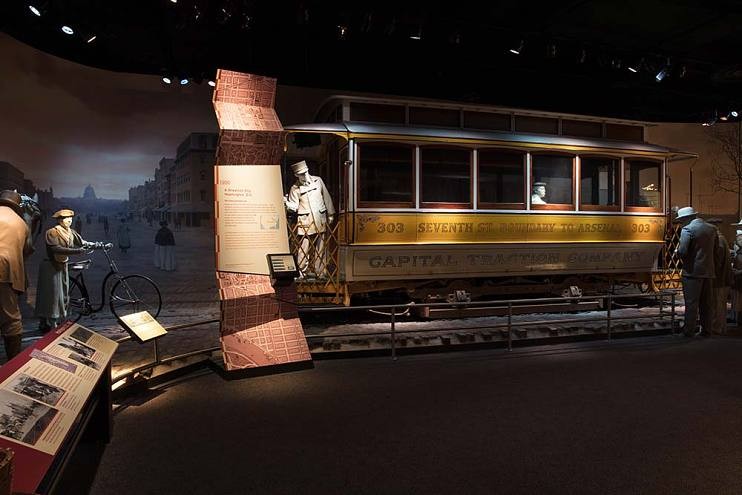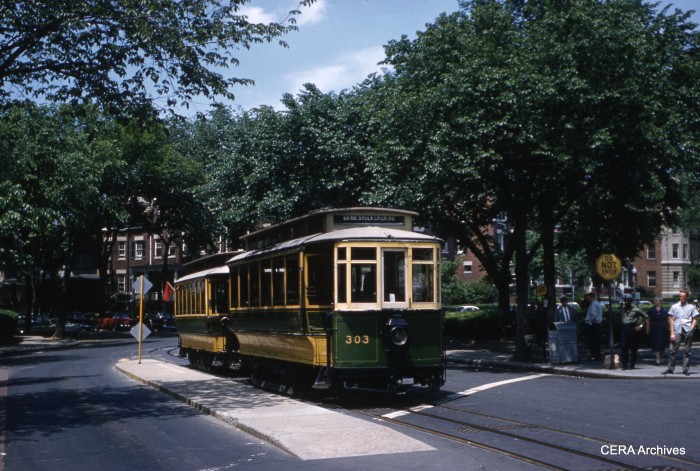America on the Move Exhibit at the Smithsonian National Museum of American History
Introduction
Text-to-speech Audio
Images
Capital Traction No. 303

A Streetcar City Exhibit at the Museum of American History

Capital Traction 303 pulling trailer 1512 circa 1961

Backstory and Context
Text-to-speech Audio
The streetcar on display at the Museum of American history is a prime example of early 20th-century city mobility, and the exhibition showcases multiple ways people in Washington, D.C. got around. Streetcars in Washington, D.C. were established in 1862 with the founding of the Washington and Georgetown railroad. The car that the museum features is from the Capital Traction Company, which was formed after the merging of the Washington and Georgetown and Rock Creek Railway companies. The exhibition also discusses the role of streetcars on suburbanization, as land development companies such as the Chevy Chase Land Company subdivided and sold land in the suburbs of Washington, D.C. to wealthy whites. The online exhibit states "Real estate developers often built streetcar lines to promote new suburban communities. Their success in selling the suburbs to middle-class workers changed neighborhood life and the rhythms of the city."
The streetcar on display at the exhibit, Capital Traction 303 was one of 16 built by the American Car Company of St Louis. Once received, the car entered service on the 7th street line of the former Washington and Georgetown railroad, which had merged with the Rock Creek Railway to form Capital Traction in 1895. The gold and white painting of the streetcar was painted specifically for the 7th street line cars, as Pennsylvania Avenue cars were painted green and cream. Inside, there are two longitudinal benches and a fare counter on each end. The museum also owns another streetcar, Capital Traction trailer 1512, which was paired with Capital Traction 303. Both cars were gifted to the Smithsonian by O Roy Chalk when the DC Transit streetcar system shut down. Car 303 is currently the only former DC streetcar that is on display within the District of Columbia.
Sources
A Streetcar City, National Museum of American History. Accessed January 3rd 2021. https://americanhistory.si.edu/america-on-the-move/streetcar-city
Capital Traction Company 522, National Capital Trolley Museum. Accessed January 4th 2021. https://dctrolley.org/CTCo522.html
Electric Streetcar, Capital Traction Co. # 303, National Museum of American History. Accessed January 4th 2021. https://americanhistory.si.edu/collections/search/object/nmah_843291.
Smithsonian National Museum of American History
